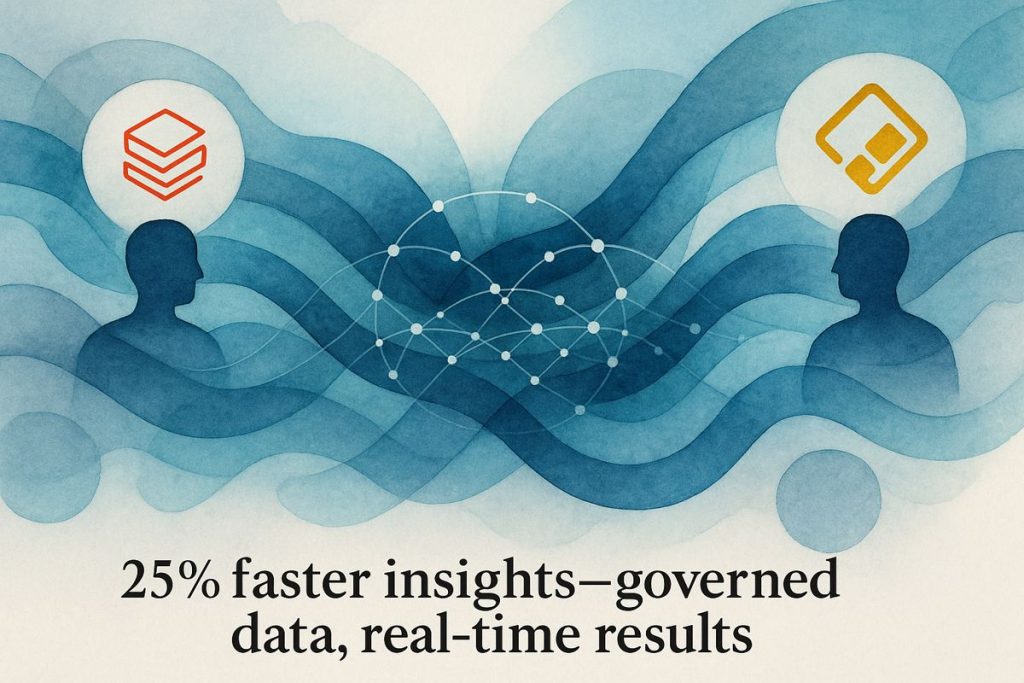The Azure Databricks Connector for Power Platform lets people easily use Databricks data in Power Apps, Power Automate, and Copilot Studio, all in real time and without copying data around. This makes things much safer and simpler, which is super important for industries like pharma that have lots of rules. Now, everyone can build apps, automate tasks, and analyze data faster and without worrying about messy scripts or security problems. It’s like flipping a switch and suddenly all your important data flows exactly where you need it, with full control and no chaos. This is a big step toward smarter, more connected, and more trusted business tools.
What is the Azure Databricks Connector for Power Platform and why is it important?
The Azure Databricks Connector for Power Platform enables seamless, real-time access to Databricks data within Power Apps, Power Automate, and Copilot Studio. This integration allows secure, governed data flows without duplication, simplifying compliance and empowering enterprises—especially in regulated industries—to automate, analyze, and innovate efficiently.
A (Not-So-Humble) Opening: Why Now?
Some mornings you can practically smell the ozone of technological change. It’s electric, but also vaguely terrifying, like watching a Tesla coil arc across a pristine lab bench. Why does this matter? Because businesses—especially those in data-laden, regulation-soaked industries like pharmaceuticals—have been thrashing around, trying to lasso their hyperspectral data assets into compliant, actionable flows. The connector promises a bridge where there used to be a palimpsest of brittle scripts and shadow IT.
I’ll admit, when I first heard the announcement, I felt a jolt of skepticism. No code, no custom connectors, no security nightmares? Surely, they jest. I remember once spending an entire week untangling mismatched API tokens between Power Automate and a Spark cluster—an experience about as enjoyable as chewing glass. Yet, this may just be my chance for redemption. Or at least, a breather.
What the Connector Actually Does (and Doesn’t)
Let’s yank the curtain back. The Azure Databricks connector is now natively baked into Power Platform’s Power Apps, Power Automate, and Copilot Studio. What does that mean in the trenches? It means regulated, governed, real-time access to Databricks data—read and write—directly from your low-code environment, without sneaky data duplication or makeshift APIs (Microsoft Tech Community).
Picture this: you’re designing a Power App to track drug trial batches. Instead of slinging CSVs across Teams or bribing a developer to build a one-off connector, you point the app directly at Databricks. Access controls? Inherited from Microsoft Entra ID (née Azure Active Directory). Traceability? Baked in via Unity Catalog. No more midnight audit panics. And the sound of it—when the data flows, unbroken, from source to dashboard—reminds me of a soft hum, the kind you hear in a well-tuned server room.
But here’s the kicker: all those glorious, compliance-assured flows live in place. The data doesn’t pack its bags and go wandering. Personal anecdote time—I once watched a well-meaning colleague accidentally duplicate six months of sales data onto a shadow cloud instance. Cue the heartburn, and a week of tense calls with IT security. With the new connector, that scenario is (almost) a relic.
The Tangible Upshot for Enterprise
From Data Silo Woes to Unified Intelligence
The integration isn’t just clever plumbing; it’s a seismic shift. According to Databricks’ own blog, bringing Power Platform closer to Databricks has cut time-to-insight by up to 25% in some early enterprise pilots. That’s not a random marketing number. That’s the difference between catching a manufacturing deviation before it hits the shelves, or after the recall letter arrives—ugh.
AI and Automation: More Than Buzzwords
Power Automate now uses Databricks as a nervous system for its automations. Imagine an AI agent in Copilot Studio, grounded not in marketing fluff, but in governed Databricks data. It can field regulatory questions or, for pharma, summarize the latest clinical data without triggering compliance migraines. It’s a bit like having a private oracle—except this one actually references your latest, most secure datasets.
Of course, everything’s not unicorns and rainbows. The connector rides on the back of Photon, Databricks’ engine, which means performance is sturdy even when you’re slinging petabytes. But you’ll still need to mind your networking topology—Azure Virtual Networks, cross-tenant architectures, the occasional hiccup with permissions. I had to remind myself: no tool is idiot-proof. I’ve proven that.
